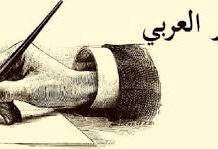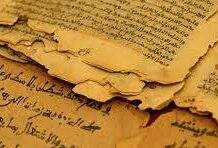Birth and Development of the Arabic Language
Birth and Development of the Arabic Language
Birth and Development of the Arabic Language
‘Language’ is a basic means of communication. Through language, one can express and shares one’s feelings, thoughts, emotions, etc. with others. According to a survey, there are about 6,000 languages in the world. But there is no definite answer as to when and how human language came into existence. Therefore, language is considered to be a blessing of nature to the human race. Scholars have divided the languages of the world into several groups according to their characteristics, such as the Aryan Group of Languages, the Teutonic Group of Languages, and the Semitic Group of Languages. Each language group is again subdivided into several smaller groups according to the similarities and differences among the languages belonging to the same group. Of course, this classification is seen to be different from scholar to scholar. The most widespread and largest of these language groups is the Aryan language group. About 47% of the world’s population belongs to this language group.
Arabic is one of the languages of the Semitic language group. The Semitic language group is said to have originated from the name of Sham, the son of the Prophet Noah. However, there is no definite information as to exactly when the Arabic language originated. But scholars speculate that the Arabic language probably dates back to the 8th century BC. However, it is unfortunate that no specimens of Arabic literature prior to the 5th century A.D. have been found. Of course, some ancient inscriptions indicate that the Arabic language was developed before the 5th century AD with considerable orally composed literature.
Scholars have divided the history of the Arabic language and literature into three main periods, namely, the Himyarite Period, the pre-Islamic Period, and the Islamic Period. No written literature of the Himyarite era has been found. This means that the Himyarite Period of the Arabic language is in darkness. This era was followed by the second era of Arabic literature. This period is called the Pre-Islamic Period. The Pre-Islamic period is said to be begun in 500 AD and lasted until the time of Hazrat Muhammad’s migration from Mecca to Medina, i.e. 622 AD. It is estimated that more than two hundred poets were born in Arabia during this period, one and a half hundred years before the beginning of the Islamic era. The Pre-Islamic poets played a significant role in the development of the Arabic language and literature by composing lots of unique Arabic poetry and some prose literature.
The ancient Arabic language was divided into several dialects. Among them two dialects were very influential – one was the Southern Dialect and the other was the Northern Dialect. The recently discovered inscriptions prove that there were lexical and phonetic differences between the two dialects. However, in the course of time, the northern dialect became more influential than the southern dialect and the southern dialect gradually became obsolete. The Arabic dialect of the North later became the language of commerce and got spread to the whole of the Middle East, South Africa, and parts of Northeast Russia. Although the Arabic poets and writers of the pre-Islamic period created literature in Arabic and played a significant role in the development of the language, it was only during the Islamic era that the language evolved into a global language. The Koran and Hadith texts played a significant role in this regard. These Islamic texts provide stability and universality to the Arabic language and literature. The present Arabic language and literature refer to the dialects of the northern part of the Arabian Peninsula. During the different periods of the Islamic era, Arabic literature became stronger in different branches. From the last days of the Umayyad period onwards, Arabic became more widespread during the Abbasid period and became the major language of literature as well as philosophy, science, geography, history, politics, diplomacy, business, and commerce. It is important to note that the Arabic language has been able to retain its originality even as it has come into contact with different languages of the world. Of course, during the long Islamic era, it adopted some elements of other languages but they were Arabicized. Today, Arabic is one of the most important languages in the world. 0 0 0.
Birth and Development of the Arabic Language
Read More: A Brief History of Arabic Literature: Early Islamic Period (622 AD-661 AD)
Birth and Development of the Arabic Language
N.B. This article ‘Birth and Development of the Arabic Language’ originally belongs to the book entitled ‘A Brief History of Arabic Literature: Pre-Islamic Period (500 AD-622 AD) by Menonim Menonimus. Birth and Development of the Arabic Language
Related Searches:
Books of Literary Criticism by M. Menonimus:
- World Short Story Criticism
- World Poetry Criticism
- World Drama Criticism
- World Novel Criticism
- World Essay Criticism
- Indian English Poetry Criticism
- Indian English Poets and Poetry Chief Features
- Emily Dickinson’s Poetry-A Thematic Study
- Walt Whitman’s Poetry-A Thematic Study
- Critical Essays on English Poetry
- Tawfiq al-Hakim’s Novel: Return of the Spirit-An Analytical Study
- Tawfiq al-Hakim’s Novel: ‘Yawmiyyat Naib Fil Arayaf’-An Analytical Study
- Analytical Studies of Some Arabic Short Stories
- A Brief History of Arabic Literature: Pre-Islamic Period (500 AD-622 AD)
- A Brief History of Arabic Literature: Early Islamic Period (622 AD-661 AD)











